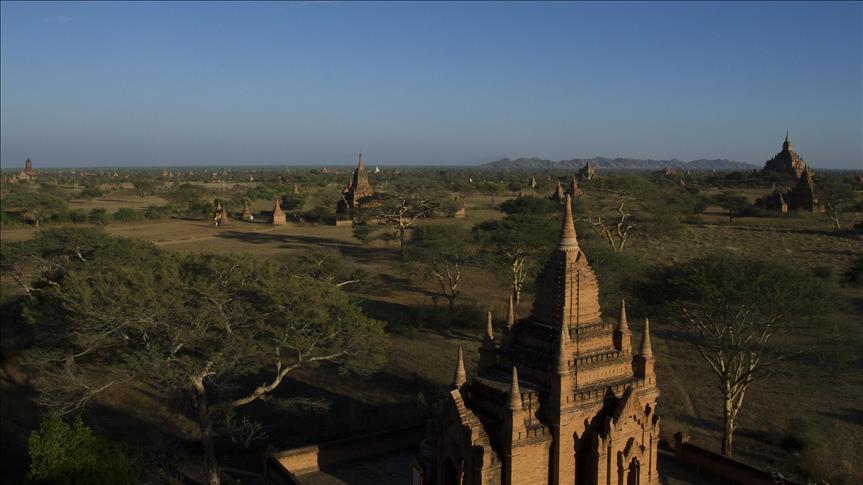Myanmar relaxes ban on climbing pagodas in ancient city
Ministry of culture allows tourists to scale 5 of thousands of pagodas in Bagan after criticism of ban by tourism operators

Yangon
By Kyaw Ye Lynn
YANGON, Myanmar
Myanmar’s government has relaxed a recent ban on tourists climbing any ancient monuments in Bagan -- the capital of a 11th-13th century kingdom -- after strong criticism from tourism operators, state-run media reported Wednesday.
The Ministry of Culture had announced late Monday the ban on scaling monuments to watch sunrises or sunsets lighting up the city’s distinctive landscape of thousands of pagodas and surrounding plain.
The measure came six days after a Chinese company filmed a video showing people donning western-style suits dancing on the top floor of ancient pagodas in Bagan, situated in the central Madalay Division and among the world's top travel destinations.
The ministry, however, made a new announcement late Tuesday on its website saying visitors would be allowed in only five temples -- Pyathatgyi, Shwesandaw, South Guni, North Guni and Thitsar Wadi.
The ministry described the climbing of the monuments as dangerous to tourists and suggested that crowds of visitors were weakening the durability and strength of the ancient structures.
It referred to the case of an American tourist who was hospitalized after falling off the Shwegugyi Pagoda late Sunday night.
After the original ban had been announced, an official from local activist group "Bagan Lovers" told Anadolu Agency that it was sure to disappoint both local and international tourists.
“I think such a ban is not the answer to preserve the old temples in Bagan,” Maung Lone said Tuesday.
“By systematically allowing tourists to clamber over the distinctive landscape of thousands of pagodas, the revenue would be used to preserve the old temples,” he added. “Otherwise the temples and pagoda would be like abandoned ones.”
Tourists had been banned from climbing the pagodas and monuments in 2012 to prevent further deterioration to their delicate stairways and terraces.
However, a few outlying temples including one of Bagan’s tallest, the Shwesandaw built in 1057 by King Anawrahta, had remained freely accessible.
From the 11th to 13th centuries, the city had served as the capital of the Kingdom of Bagan, the first dynasty to unify the regions that would later constitute modern Myanmar.
During the kingdom's height, more than 13,000 Buddhist temples, pagodas and monasteries were constructed in Bagan’s 42-square-kilometer (16-square-mile) plain.
Of them, around 2,200 temples and pagodas survive to the present day while another 2,000 remain in ruins.
Anadolu Agency website contains only a portion of the news stories offered to subscribers in the AA News Broadcasting System (HAS), and in summarized form. Please contact us for subscription options.






